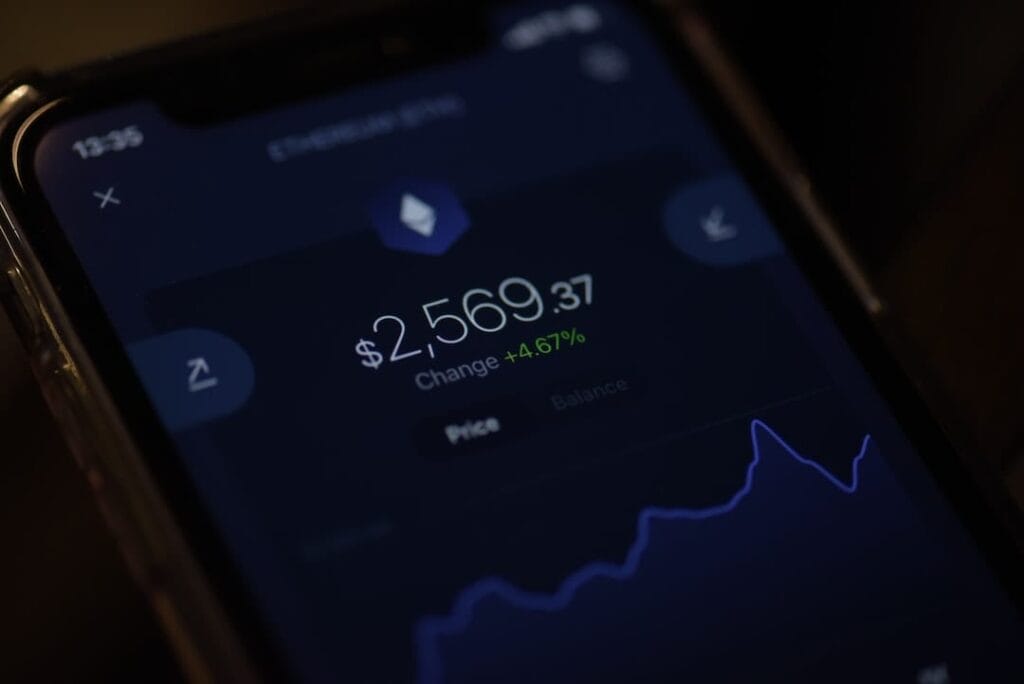Dividend-paying cryptocurrencies are a relatively new concept in the world of digital assets. These cryptocurrencies, like traditional dividend stocks, offer investors the opportunity to earn passive income while holding their assets.
Disclaimer: This information is general in nature and for informational purposes only. It is not personal financial advice and has not taken into account your personal financial position or objectives. Make sure to refer to a licensed financial or tax advisor.
In simple terms, dividend-paying cryptocurrencies work by distributing a portion of their profits to token holders. This distribution is typically done on a regular basis, such as monthly or quarterly, and is based on the number of tokens held by the investor. The dividends can be paid out in the form of additional tokens or in a different cryptocurrency.
To generate passive income, investors simply need to acquire and hold these dividend-paying cryptocurrencies in their digital wallets. The more tokens they hold, the higher their potential earnings. This makes it an attractive investment option for those looking to earn passive income without actively trading or managing their investments.
Table of Contents
The Benefits of Investing in Dividend-Paying Cryptocurrencies: Generating Passive Income while Holding Assets
One of the main advantages of earning passive income through dividend-paying cryptocurrencies is the ability to generate a steady stream of income without actively working for it. This can be particularly appealing for individuals who are looking to supplement their regular income or build wealth over time.
Additionally, holding assets that generate dividends can provide a sense of security and stability. Unlike other forms of investment where the value of the asset may fluctuate, dividend-paying cryptocurrencies offer a consistent source of income regardless of market conditions. This can help investors weather market volatility and provide a reliable income stream.
Furthermore, dividend-paying cryptocurrencies offer the potential for capital appreciation in addition to passive income. As the value of these cryptocurrencies increases over time, investors can benefit from both the growth in value and the regular dividends they receive. This dual benefit can significantly enhance overall returns and make it an attractive investment option.
Understanding the Risks of Dividend-Paying Cryptocurrencies: Evaluating the Market and Choosing the Right Investments
While dividend-paying cryptocurrencies offer the potential for passive income, it is important to understand and evaluate the risks associated with these investments. One of the main risks is the volatility of the cryptocurrency market. Cryptocurrencies are known for their price fluctuations, and this can impact the value of dividend-paying tokens as well.
Additionally, there is a risk of investing in fraudulent or unreliable projects. The cryptocurrency market is still relatively new and unregulated, making it susceptible to scams and fraudulent activities. It is crucial for investors to thoroughly research and evaluate the projects they are considering investing in to minimize this risk.
Furthermore, the sustainability of dividends is another important factor to consider. Some dividend-paying cryptocurrencies may not have a sustainable business model or revenue stream, which can lead to a decrease or cessation of dividends over time. It is essential to assess the financial health and viability of the project before investing.
To mitigate these risks, investors should conduct thorough due diligence and research before investing in dividend-paying cryptocurrencies. This includes analyzing the project’s whitepaper, team members, partnerships, and overall market conditions. Diversification is also key to spreading risk across multiple investments and minimizing exposure to any single project.
Dividend-Paying Cryptocurrencies vs Traditional Dividend Stocks: Which is a Better Investment Option?
When comparing dividend-paying cryptocurrencies to traditional dividend stocks, there are several factors to consider.
One advantage of dividend-paying cryptocurrencies is their potential for higher returns. The cryptocurrency market has historically shown higher volatility and growth rates compared to traditional stock markets. This means that investors have the opportunity to earn higher dividends and capital appreciation with cryptocurrency investments.
On the other hand, traditional dividend stocks offer a more established and regulated investment environment. These stocks are typically backed by well-established companies with a track record of generating profits and paying dividends. This can provide a sense of stability and security for investors who prefer a more conservative investment approach.
Another factor to consider is accessibility. Investing in dividend-paying cryptocurrencies can be done by anyone with an internet connection and a digital wallet. Traditional dividend stocks, on the other hand, often require a brokerage account and may have minimum investment requirements. This makes dividend-paying cryptocurrencies more accessible to a wider range of investors.
Ultimately, the choice between dividend-paying cryptocurrencies and traditional dividend stocks depends on an individual’s risk tolerance, investment goals, and familiarity with the respective markets. Some investors may choose to diversify their portfolio by investing in both asset classes to take advantage of the unique benefits offered by each.
Maximizing Your Earnings with Dividend-Paying Cryptocurrencies: Strategies for Building a Diversified Portfolio
To maximize earnings with dividend-paying cryptocurrencies, it is important to build a diversified portfolio. Diversification helps spread risk across different investments and can increase the potential for earning passive income.
One strategy for building a diversified portfolio is to invest in a variety of dividend-paying cryptocurrencies across different sectors or industries. This can help mitigate the risk of investing in a single project or sector that may underperform. By spreading investments across multiple projects, investors can increase their chances of earning consistent dividends.
Another strategy is to consider the size and market capitalization of the projects being invested in. Investing in a mix of large-cap, mid-cap, and small-cap dividend-paying cryptocurrencies can provide exposure to different levels of risk and potential returns. Large-cap projects may offer more stability and lower risk, while small-cap projects may have higher growth potential but also higher volatility.
Furthermore, investors should consider the overall market conditions and trends when building their portfolio. Investing in dividend-paying cryptocurrencies that are aligned with emerging trends or technologies can increase the potential for capital appreciation and higher dividends. Staying informed about market developments and industry news can help identify promising investment opportunities.
How to Choose the Best Dividend-Paying Cryptocurrencies: Analyzing Market Data and Historical Performance
When choosing dividend-paying cryptocurrencies, it is important to consider several factors to make informed investment decisions.
One factor to consider is the project’s underlying technology and use case. Investing in projects that have a strong technological foundation and solve real-world problems can increase the likelihood of long-term success. Projects with a clear roadmap and a strong development team are also worth considering.
Another factor to analyze is the project’s financial health and revenue generation. Understanding how the project generates profits and sustains its dividend payments is crucial. Investors should review the project’s financial statements, revenue streams, and business model to assess its sustainability.
Additionally, analyzing market data and historical performance can provide valuable insights into the potential returns of dividend-paying cryptocurrencies. Investors should review historical dividend payments, price performance, and market trends to gauge the project’s potential for future growth and earnings.
It is also important to consider the liquidity of the dividend-paying cryptocurrency. Investing in tokens that have a high trading volume and are listed on reputable exchanges can provide liquidity and ease of buying or selling. This can be particularly important when it comes to realizing profits or rebalancing a portfolio.
Setting Realistic Goals for Dividend-Paying Cryptocurrency Investments: Balancing Risk and Reward
Setting realistic goals is essential when investing in dividend-paying cryptocurrencies. It is important to balance risk and reward and have a clear understanding of one’s investment objectives.
One approach to setting goals is to determine the desired level of passive income. Investors should assess their financial needs and determine how much passive income they would like to generate from their investments. This can help guide investment decisions and portfolio allocation.
Another factor to consider is the time horizon for investment. Dividend-paying cryptocurrencies can be a long-term investment strategy, as they offer the potential for both passive income and capital appreciation. Investors should align their goals with their investment time frame and be prepared for potential market fluctuations along the way.
Furthermore, it is important to regularly review and reassess investment goals. As market conditions change and new opportunities arise, investors may need to adjust their goals and portfolio allocation. Regularly monitoring the performance of dividend-paying cryptocurrencies and staying informed about market developments can help make informed decisions.
Tax Implications of Dividend-Paying Cryptocurrencies: Understanding the Legal and Financial Aspects of Investing
Investing in dividend-paying cryptocurrencies can have tax implications that investors need to be aware of. The tax treatment of these investments can vary depending on the jurisdiction and local regulations.
In many countries, dividends received from traditional stocks are subject to income tax. Similarly, dividends received from dividend-paying cryptocurrencies may also be subject to taxation. It is important for investors to consult with a tax professional or accountant to understand their specific tax obligations and ensure compliance with local laws.
Additionally, investors should keep accurate records of their dividend payments and transactions. This includes documenting the date and amount of each dividend received, as well as any buying or selling of tokens. These records can be useful for calculating tax liabilities and reporting income accurately.
Furthermore, investors should be aware of any reporting requirements related to cryptocurrency investments. Some jurisdictions may require individuals to report their cryptocurrency holdings or transactions for tax purposes. Staying informed about local regulations and seeking professional advice can help navigate the legal and financial aspects of investing in dividend-paying cryptocurrencies.
The Future of Dividend-Paying Cryptocurrencies: Predictions and Trends for the Emerging Market
The future of dividend-paying cryptocurrencies looks promising, as more projects enter the market and investors seek alternative sources of passive income.
One trend that is likely to continue is the growth of decentralized finance (DeFi) platforms. These platforms offer various financial services, including lending, borrowing, and staking, which can generate passive income for token holders. As DeFi continues to gain traction, more dividend-paying cryptocurrencies are expected to emerge in this space.
Another trend to watch is the integration of dividend-paying cryptocurrencies into traditional financial systems. As cryptocurrencies become more mainstream, there is a growing interest from traditional financial institutions in offering dividend-paying tokens to their clients. This could potentially open up new investment opportunities and increase the adoption of dividend-paying cryptocurrencies.
Furthermore, advancements in blockchain technology and smart contracts are expected to enhance the transparency and efficiency of dividend payments. This could lead to more secure and reliable dividend distributions, further increasing the appeal of dividend-paying cryptocurrencies.
Taking Advantage of Passive Income Opportunities with Dividend-Paying Cryptocurrencies
In conclusion, dividend-paying cryptocurrencies offer investors the opportunity to earn passive income while holding assets. By investing in these cryptocurrencies, individuals can generate a steady stream of income and potentially benefit from capital appreciation.
While there are risks associated with investing in dividend-paying cryptocurrencies, thorough research and diversification can help mitigate these risks. By analyzing market data, evaluating the project’s financial health, and setting realistic goals, investors can make informed investment decisions.
It is important to understand the tax implications and legal aspects of investing in dividend-paying cryptocurrencies and seek professional advice when necessary. Additionally, staying informed about market trends and developments can help identify new investment opportunities and maximize earnings.
Overall, dividend-paying cryptocurrencies provide an exciting opportunity for individuals to take advantage of passive income opportunities in the emerging market of digital assets. With careful consideration and strategic planning, investors can potentially earn consistent dividends and build wealth over time.
If you’re interested in exploring passive income strategies beyond dividend-paying cryptocurrencies, you might find the article “Top 10 Passive Income Ideas” on Passive Income Solutions to be an insightful read. This article delves into the concept of passive income and questions whether it is genuinely passive or requires ongoing effort. If you are interested in other ideas, you can check them out here.
FAQs
What are dividend-paying cryptocurrencies?
Dividend-paying cryptocurrencies are digital assets that distribute a portion of their earnings to their holders in the form of regular payments, similar to how traditional stocks pay dividends to their shareholders.
How do dividend-paying cryptocurrencies generate income?
Dividend-paying cryptocurrencies generate income through various means, such as transaction fees, staking rewards, and revenue from decentralized applications built on their blockchain.
What are some examples of dividend-paying cryptocurrencies?
Some examples of dividend-paying cryptocurrencies include NEO, PIVX, and KuCoin Shares.
What are some passive income strategies with dividend-paying cryptocurrencies?
Passive income strategies with dividend-paying cryptocurrencies include buying and holding the tokens for the long term, staking the tokens to earn rewards, and participating in masternodes to earn a share of the network’s transaction fees.
What are the risks associated with investing in dividend-paying cryptocurrencies?
The risks associated with investing in dividend-paying cryptocurrencies include market volatility, regulatory uncertainty, and the potential for scams and frauds. It is important to conduct thorough research and due diligence before investing in any cryptocurrency.







